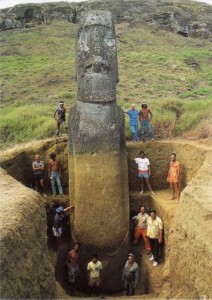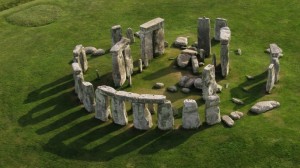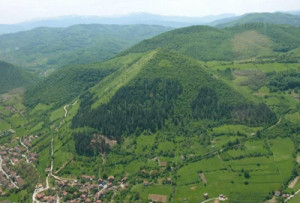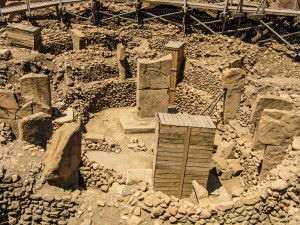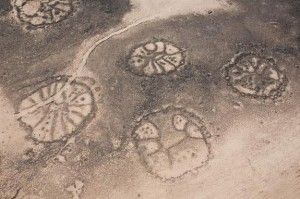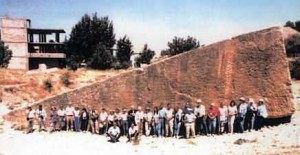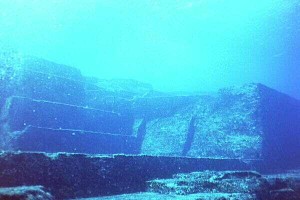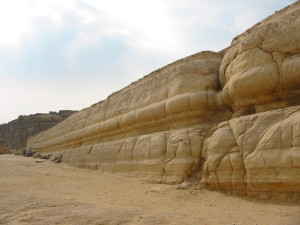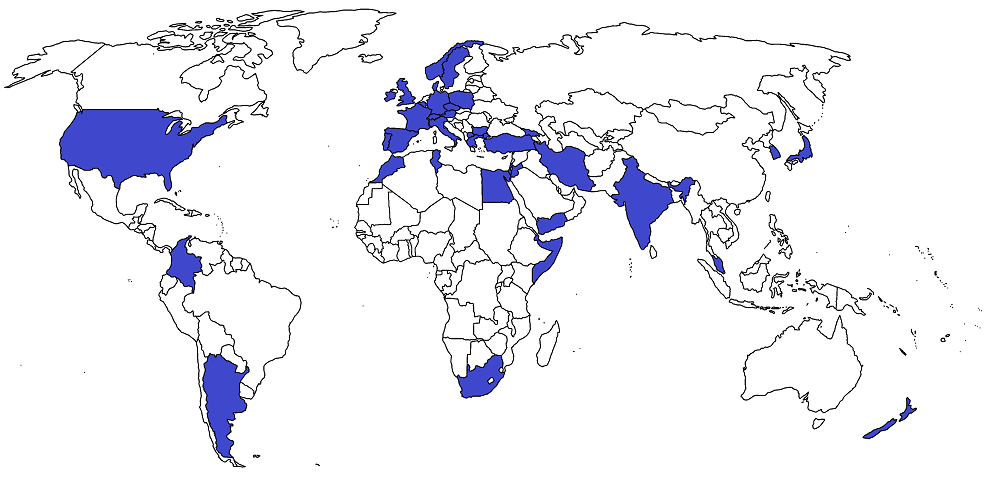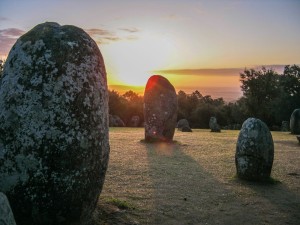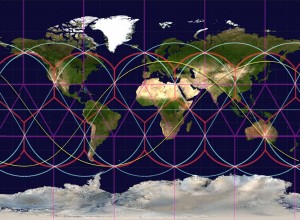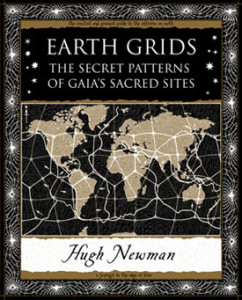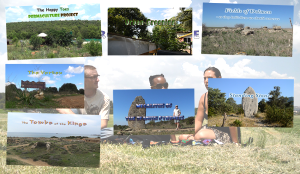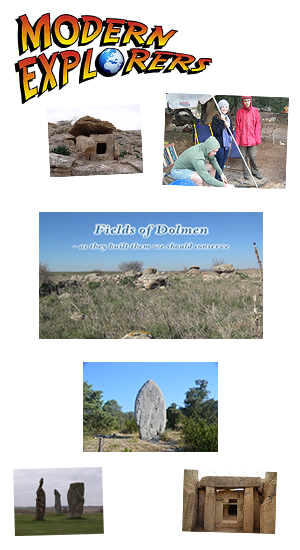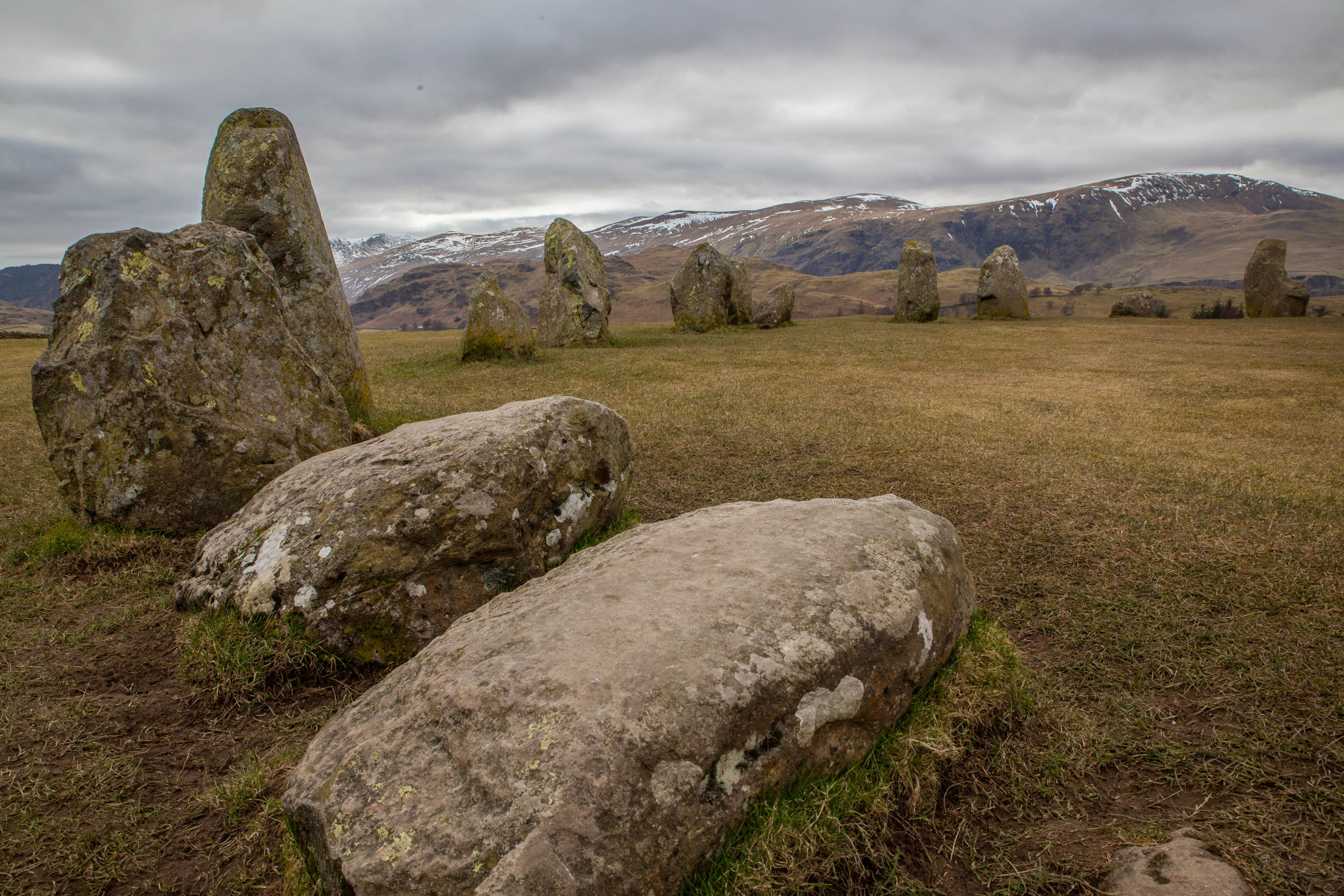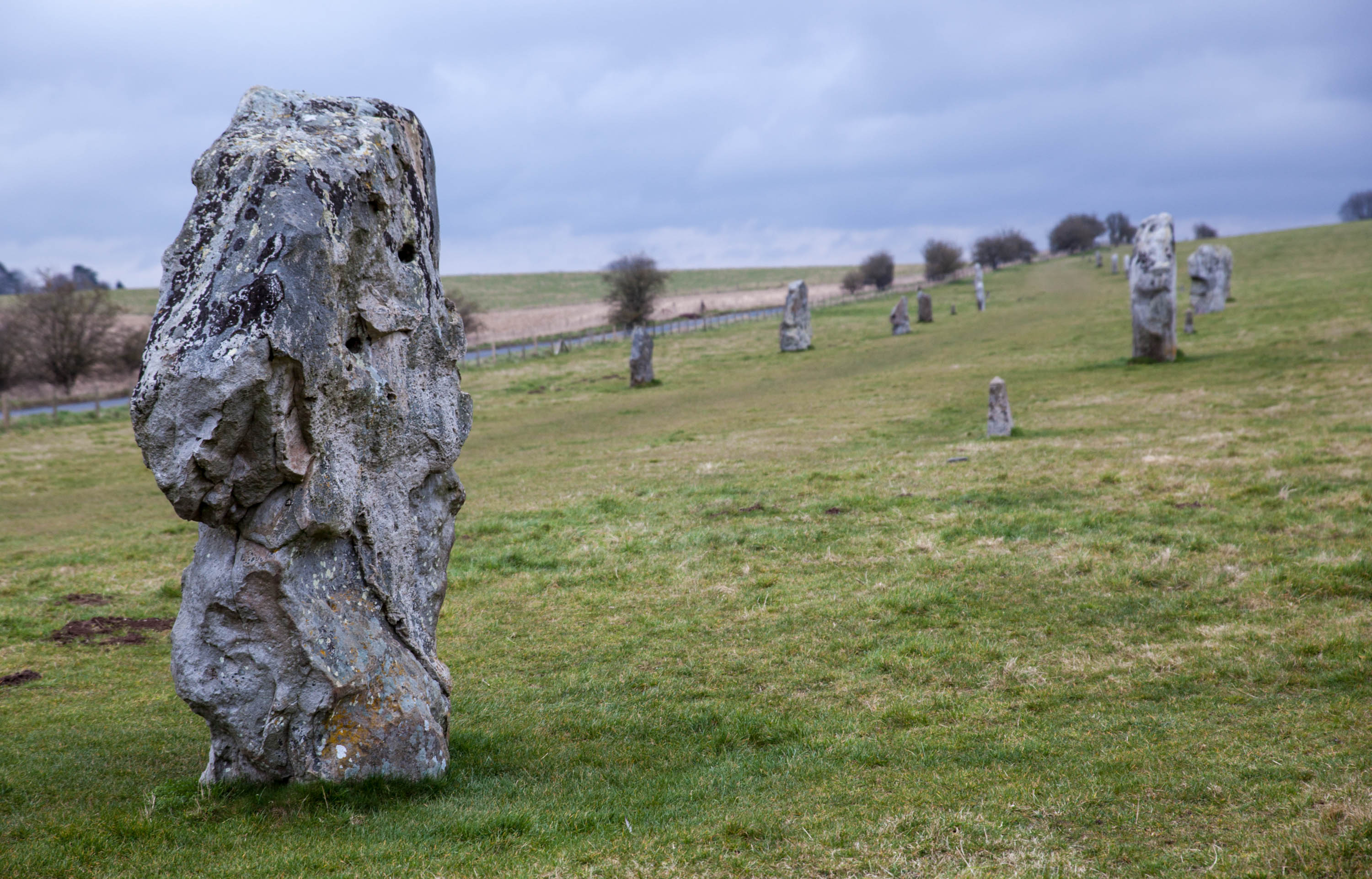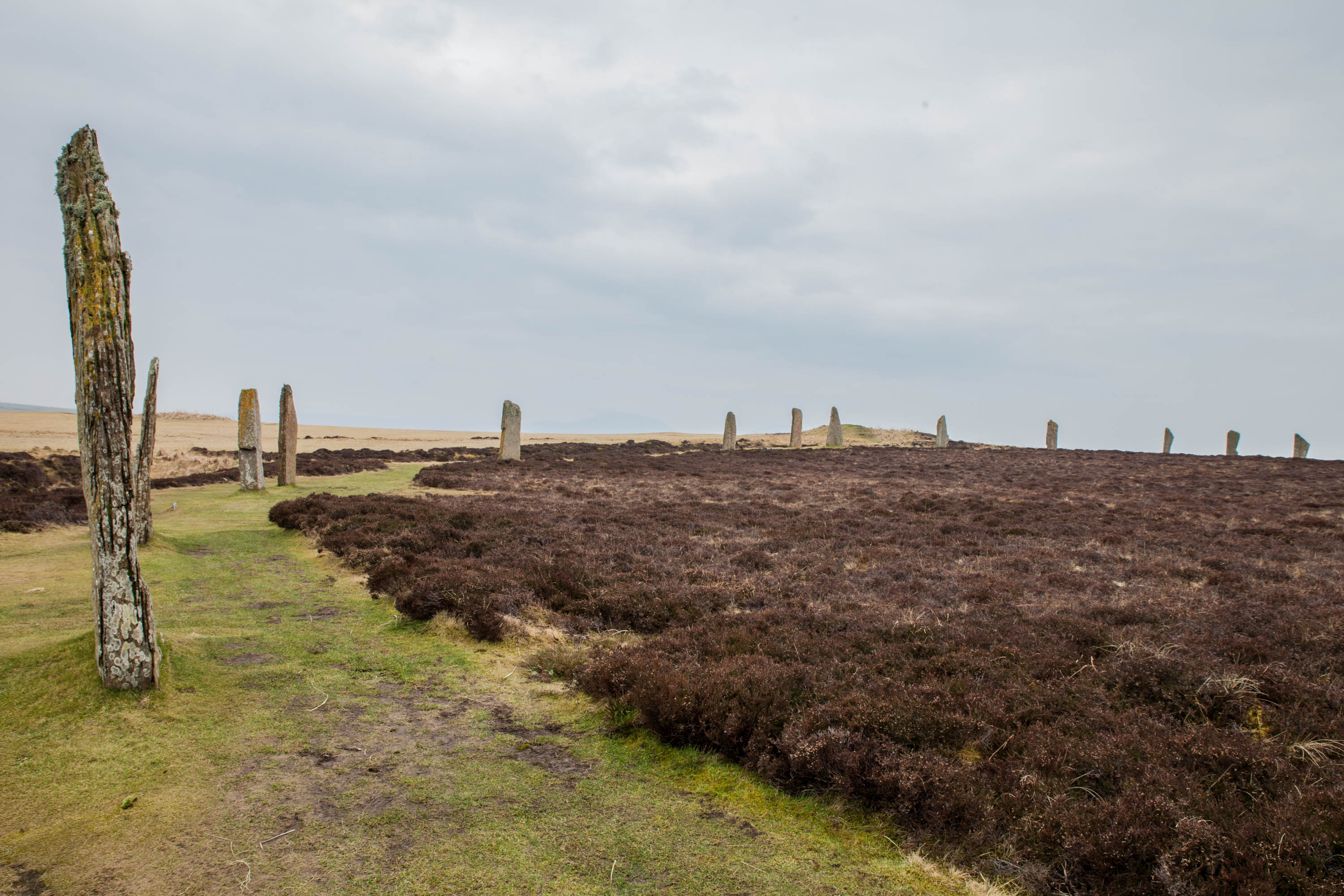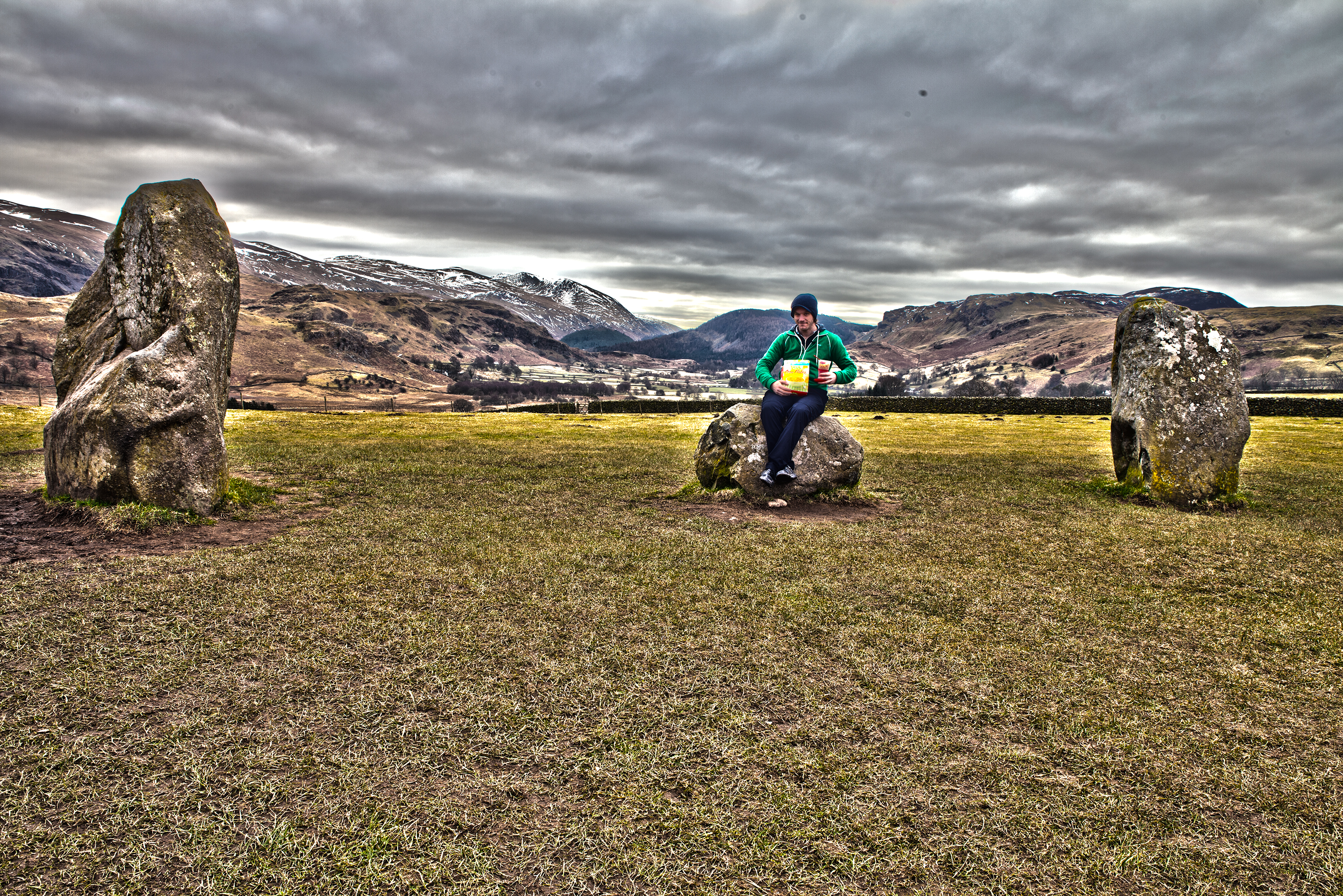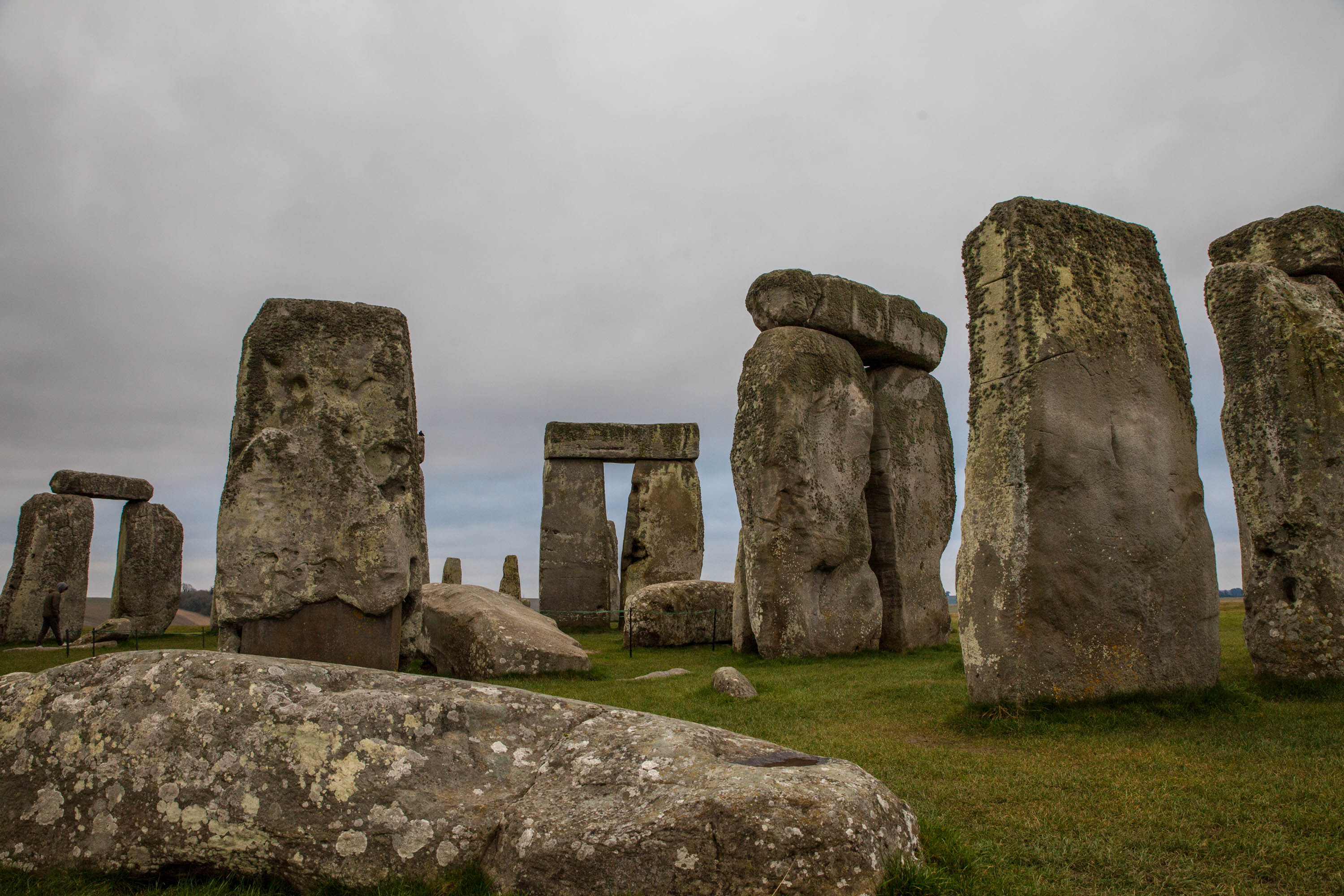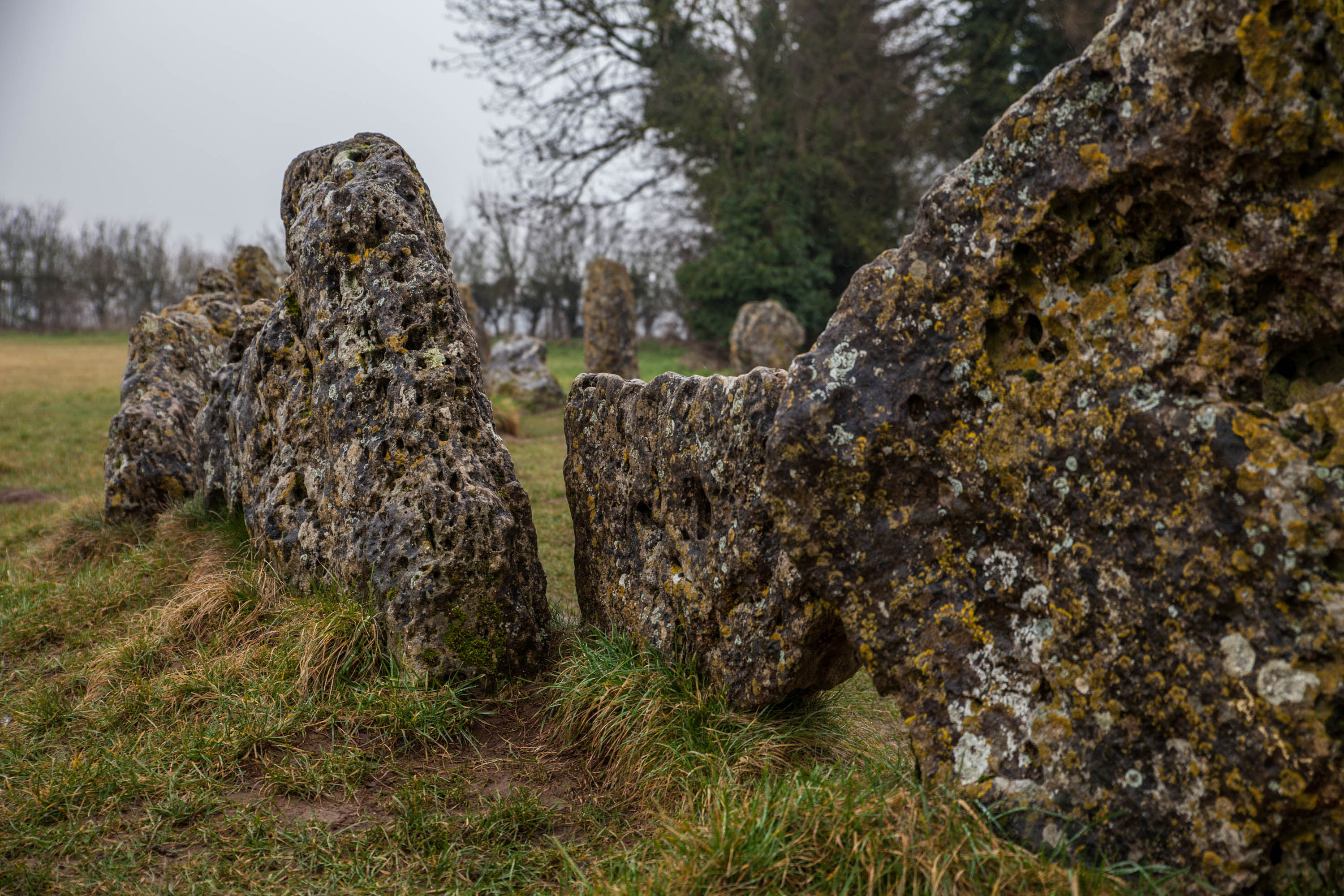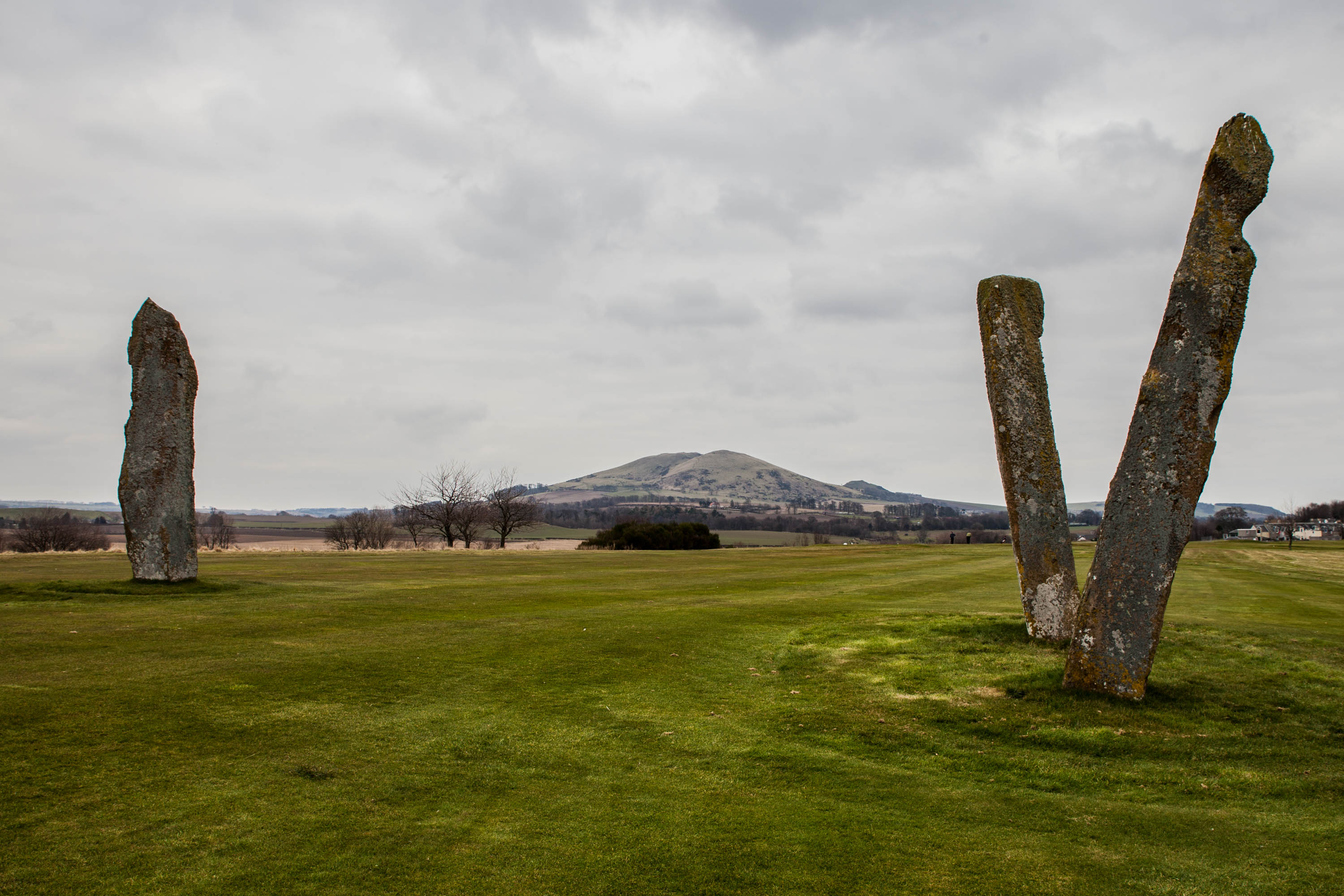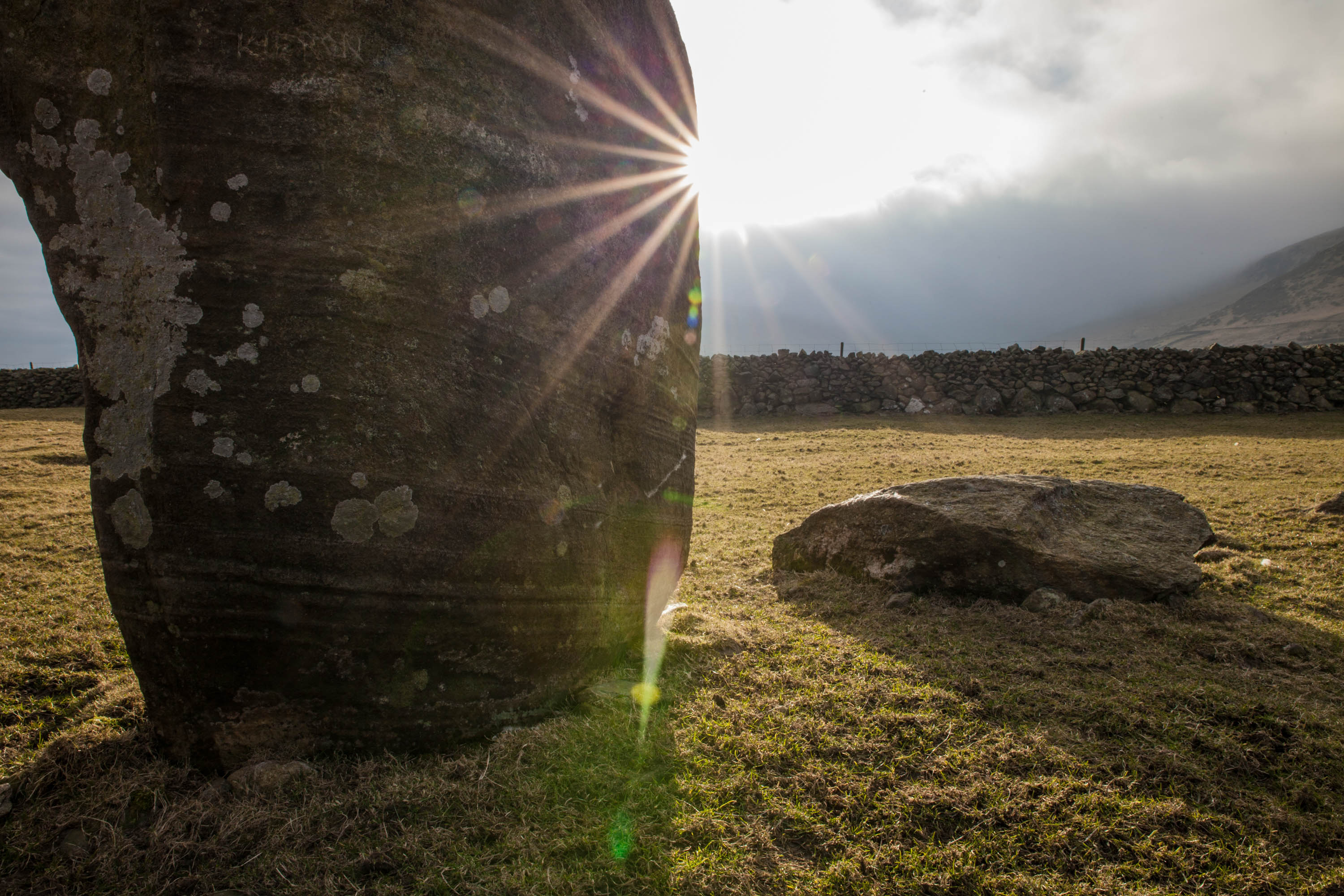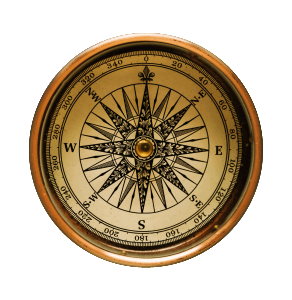
Ancient Civilizations Project

.
This project has received the majority of our attention for the first few years because it’s a subject that fascinates us all. I’m sure you’re aware that previous inhabitants of our planet have left stone structures all over the place, leaving us puzzled and trying to work out the who’s, the when’s and the why’s. But places like Stonehenge and the Pyramids in Egypt are just the tip of the iceberg when it comes to the extent of the monuments left behind.
There are literally hundreds of thousands of sites around the world with many that have been destroyed or are yet to be discovered. To give you an idea in France alone there are something like 10,000 megalithic sites and in North and South Korea combined there are 30-35,000 dolmen. There is also huge variety in the types of site found; free-standing temples or temples carved in the side of mountains, pyramids, underground cities, stone circles, dolmen, menhirs, stone spheres, long barrows, cart-ruts, statues, and structures that are combinations.
Research into these structures is very difficult as an awful lot of guesswork is required but advances in technology, an improved understanding of our reality and the addition of the internet have enabled us to form a clearer picture of what our ancestors were up to. In the past research was carried out by university educated experts focusing on small sections of the globe but the internet has allowed us to gather evidence from all around the world, helping us to see the bigger picture.
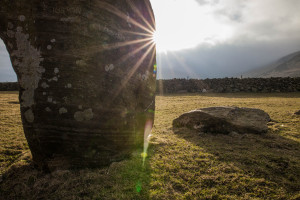
.
.
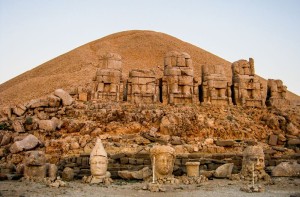
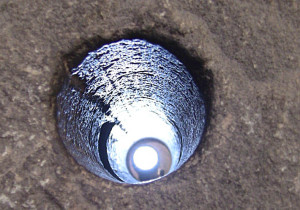
.
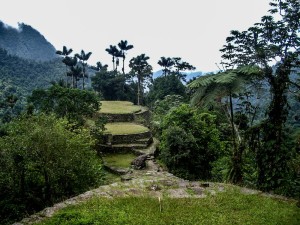
.
We are part of a growing community of people that are looking at this evidence and realizing it is truly possible that a civilization once inhabited the entire surface of the planet, was much more advanced than we are, both technologically and spiritually and existed way before our current civilization even began. So are we in a paradigm shifting era, another “oh the Earth isn’t flat moment” or are a lot of people just talking rubbish, this is what we wish to investigate by listening to both mainstream and alternative researchers.
.
.
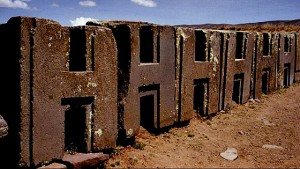
.
.
The body of evidence keeps on growing and there have been some highly significant discoveries in the last 10-15 years, helping us to build an even more complete picture of our past, some of those significant recent discoveries include –
.
.
.
The Easter Island Bodies – In 2012 bodies were discovered under the Easter Island heads, making the construction of those beautiful statues even more impressive and opening up all sorts of questions about how old they are. It is one of a number of famous sites where recent underground surveys have uncovered further ruins.
.
Ruins Under Stonehenge – The discovery of different layers of ruins underneath Stonehenge in 2014 has again highlighted that there may be a lot more under the ground still to discover and again adds to the mystery of why they were built and when?
.
.
Pyramids in Bosnia – In 2005 Dr. Osmanagich discovered 5 hills in a valley in Bosnian that he claims are the world’s largest pyramids, the largest stands at 220 metres tall. He claims there is a network of tunnels under this pyramid and that it was built over 30,000 years ago, it is not a full-gone conclusion so there is still debate as to whether these hills are pyramids but if they are then it is a huge piece of evidence suggesting there was an advanced and global civilization in our ancient past.
.
.Gobekli Tepe – In 1995 a group of stone circles were excavated in Turkey close to the border with Syria. They have found many stone circles with animals carved onto the monoliths, anthropomorphic carvings and some amazing statues have also been discovered at the site. It is believed to be some sort of religious monument and is officially dated at 11,000 years old, which doesn’t really fit with the current story of how our society was created in Mesopotamia.
.
Our Film from 2016
Adams Calendar – is a huge megalithic complex discovered on the top of an escarpment in South Africa in 2003. Further surveying of the area has revealed millions of stone circles that form patterns on the ground, sometimes with small channels or corridors connecting them. Michael Tellinger has studied the area and written about how our ancient ancestors might have been using these circles to harness the telluric energies being emitted from the ground. If his theories are correct then the builders of this network of stone circles must have been highly advanced.
.
The Wheels of Azraq – In 2011 some huge geoglyphs were discovered, known as the Middle East’s equivalent to the Nazca lines. Another fascinating piece of evidence which makes us ask why were these created and who was supposed to see them?
.
.
We have focused our work on the lesser known, more esoteric sites such as megalithic sites or potential pyramids in Italy but we have also been to the likes of Petra or Stonehenge looking for evidence to support alternative theories. Our aim is to contribute to the mounting evidence to suggest there was a global society before ours, we are all travellers and while on the road we try to document what we see. To tackle the fields concerning the age and how advanced this society was require we need people with some training in archaeology or engineering, below we have listed some of the most significant pieces of the puzzle and some of the researchers who have helped us think the way we do.
.
.
.
.
Were They Advanced ??
There are some anomalies on this planet that are hard to explain if we are to believe our ancestors were primitive. There are blocks of stone that have been cut with such precision that we can’t fit a piece of paper between them, there are drill holes that go through massive blocks of granite and some of these blocks are so heavy we can barely lift them today, below are some of those anomalies.
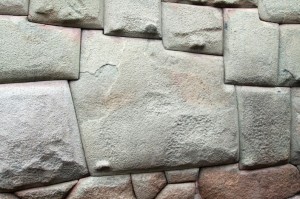
.
.
Huge Stones – There are some massive monolithic blocks at various ancient sites around the world that are so heavy we would need some hardcore military machinery to move them today. The largest stone is in Aswan, Egypt measuring 42 metres and weighing an estimated 1200 tons, the close second is in Baalbek and is estimated to be 1160 tons. To put that into perspective a Boeing 747 (one of the huge jumbos) weighs 88 tons when empty so moving these huge stones is not an easy task, especially considering they moved some up hills and through forests. One thing’s for sure our ancestors were able to move these large pieces of stone that we can only move nowadays with technology so surely we should consider that these people could have had technology to help them.
.
.
Manipulating Rock – There are sites that suggest our ancestors were able to shape, carve, lift and seemingly manipulate rock and easily use it for all sorts of purposes. The precise shaping of the rock at such sites as Puma Punku or the 12 sided cuzco stone suggest detailed planning and some form of technology were used. All over the world there are shapes cut into the rock that look like there were used for a mechanical use, like Perperikon in Bulgaria where the shapes carved into the bedrock look like part of a kind of processing plant. There are also huge digging projects, such as the underground cities in Cappadocia where massive amounts of earth and rock have been removed to produce approx. 40 different cities or networks of tunnels and rooms that can house between 20 – 60,000 people.
The film we made about The Tombs of the Kings
.
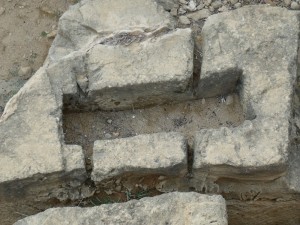
Tombs of the Kings, Cyprus
.

Puma Punku, Peru
.
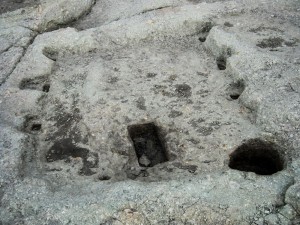
Perperikon, Bulgaria
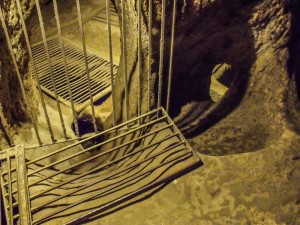
The underground city of Kaymakli, like a rabbits warren
.
.
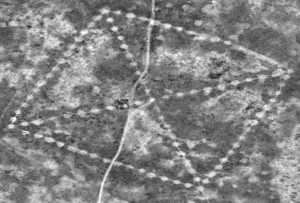
The huge square in Kazakstan
Pictures for the Sky – There are some huge structures that we only discovered once we learnt how to fly, the Nazca lines are the most famous – a series of animals and trapezoid shapes 100’s of feet wide scratched into the desert in Peru. More recently geoglyphs of a similar size have been discovered in the Middle East (See Wheels of Azraq above) and a researcher looking for pyramids in Kazakstan found a square 900ft across with a dotted X inside. You can only see carvings of this size from the sky so it begs the question did our ancestors have flying machines? or were they communicating with a species that did?
.
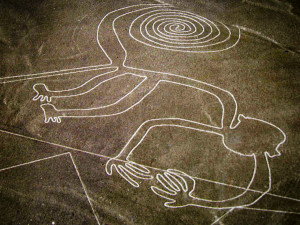
The Monkey at the Nazca Lines
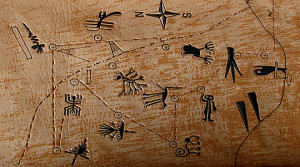
A map of the geoglyphs in Nazca
.
.
.
Evidence of Technology – There are holes in the rocks in Peru that look like they were made by a drill, there are the mysterious cart ruts found in different parts of the world (but particularly on the island of Malta) that look like they were made by machine. There are some curious carvings at the ruins in Abydos, Egypt one that looks like a tank and the other a helicopter, in fact they look so similar it makes the hieroglyphs look fake. In the ancient hindu texts you have the blueprints for flying machines called Vimanas and some little golden artifacts belonging to Klaus Dona and found in South America are also obvious flying machines.
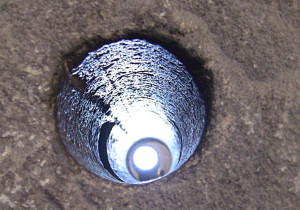
A hole through a granite block in Peru
.

A golden space shuttle from South America’s past
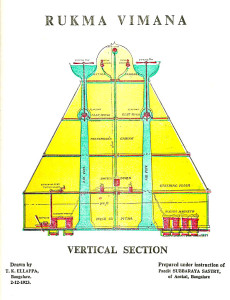
Plans for an ancient flying machine
.
.
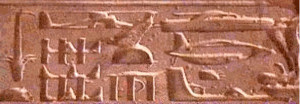
The Abydos Hieroglyphs
.
.
A film showing the spheres
.
Stone Spheres of Central America – The stone spheres found in Central America and believed to have been created by the Olmecs are so precise and so well carved we have to consider that they were highly intelligent and possibly had some form of technology to help them.
.
.
.
.
.
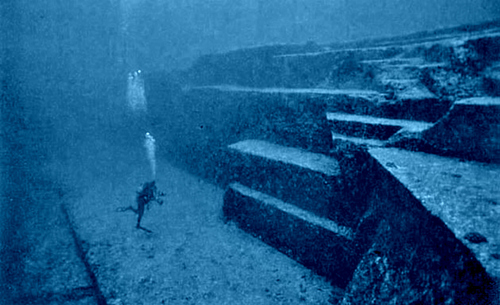
Yonaguni, Japan
How Ancient Were They?
It is not possible to carbon date stone so dating the sites around the world is a difficult task. Some amazing artifacts have been found at some of these sites and they have been used to estimate the age, but the problem we have with this way of dating is that there is no way of knowing if the artifacts were left by the builders. Dolmen for example could be 10,000 years old but were used as shelters by various groups of our ancestors 5000 years ago who left organic remains that we are able to carbon date. The carbon dating method also assumes a constant rate of carbon decay and that the ratio of C13 and C14 in organic matter has always been the same, neither of which we can prove categorically.
.
.
The current mainstream belief is that our society emerged from Mesopotamia around 8000 years ago but the discovery of Gobekli tepe in Turkey, said to be at least 11,000 yrs old and weathering on the sphinx have shed doubt on the official story. Recent discoveries such as the Bosnian Pyramids and Adams Calendar, which are believed to be 32,000 and 285,000 years old by the researchers involved, add fuel to the fire and make us think that the age of all the ruins in the world should be up for debate. Problem is there is a very well established group of academics who don’t want to change their minds and won’t even join the debate. Alternative researchers are labelled as pseudo-scientists but they are generally intelligent researchers who make valid points, which is probably why they are ignored. We say what’s the harm in debating, let’s go for strength in numbers and a the more minds the merrier kind of approach.
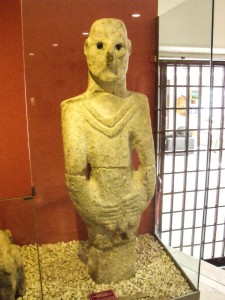
A statue found at Gobekli Tepe
.
.
.
Take a look at Graham’s film
.
Deep Underwater Ruins – Graham Hancock has done some fabulous work regarding various ruins around the world that are so deep under the surface of the oceans that they would have last been above water 11-12,000 years ago. We cannot rule out that this civilization may have been either, highly advanced and built under water or they were building these structures approx. 5000 years before the alleged birth of our current society.
.
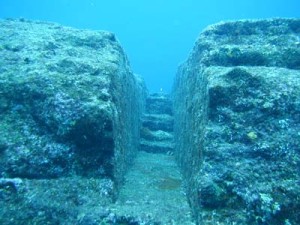
Does that look natural to you?
.
.
Weathering on the Sphinx – In 1993 NBC aired a documentary questioning the age of the sphinx then in more recent years Egyptologist John Anthony West and geologist Robert Schoch have investigated further. The claim is that the weathering on the back of the sphinx has been caused by prolonged exposure to heavy rain, which hasn’t occurred in that part of Africa for the last 9000 years, at least doubling the age of this mysterious monument. Mainstream Egyptologists have reacted like babies and publicly attacked the NBC producers, John and Robert rather than to discount their theories with intelligence and scientific fact, this just makes us want to question its age even more.
.
.
.
The Work of Richard Thompson and Michael Cremo – In their book ‘Forbidden Archaeology’ they discuss discoveries from the 19th and 20th centuries that have been forgotten and brushed aside because they don’t fit in with the current model of the development of modern man. They have all sorts of strange anomalies, such as a necklace found embedded in the rock of a coal mine a mile under the ground or ancient pieces of artwork depicting humans fighting with dinosaurs in the Ica Stone of Peru. They believe that humans have existed with civilizations emerging and disappearing for millions of years. This is a bold claim and one that has been shunned by mainstream archaeology but if you look at some of the evidence they present you might start to question how old we really are.
.
.
.
Gobekli Tepe – Officially dated as 11,000 years old the discoveries at this site cannot be ignored and are causing mainstream archaeologists to reconsider their thinking.
.
.
.
.
.
Were They Global??
Being travellers we have focused most of our attention on the global aspect of the subject and we feel that a civilization that can span an entire planet must have a certain level of technology to do so meaning to prove they were global also suggests they were advanced. Evidence of a global society comes in the form of similarities between the ancient monuments left on our planet and in this section we look at the global occurrence of some of these types of site.

.
.
Symbols from an Alien Sky – an excellent film from the thunderbolts project
Petroglyphs and Geoglyphs – There are some striking similarities between the cave paintings and rock carvings found on different continents around the globe. There is also the link between huge carvings found at Nazca or in Azraq, little similarity between what they depict but maybe they were doing it for the same reason, e.g. communicating with something in the sky. Squatter man is a fascinating rock painting found in various parts of the globe and possibly demonstrates ancient knowledge of physics, check out the great work by David Talbot and the Thunderbolts project for more details.
.
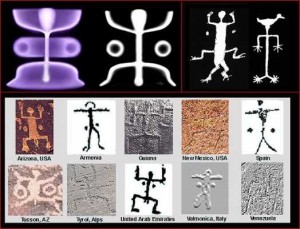
Squatter man compared to plasma discharge
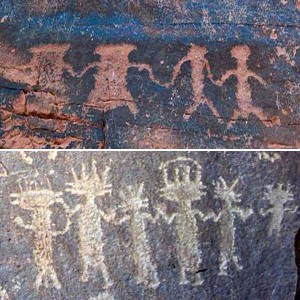
A couple of varieties of Squatter man found around the globe
.
.
.
Practical Rock Carvings – shaping of the bedrock has been used for many different reasons, like making steps, liquid vessels, clocks and other things for which we can only guess at the reasons they were created. We are able to make comparisons and join dots around the world as some features are found in more than one location.
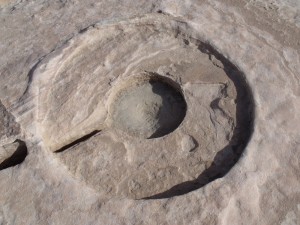
A clock found at Petra
.
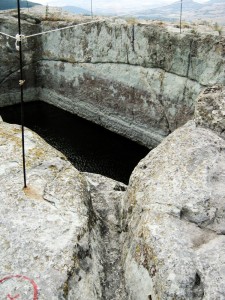
A huge water chamber and a channel leading into it, Bulgaria
.
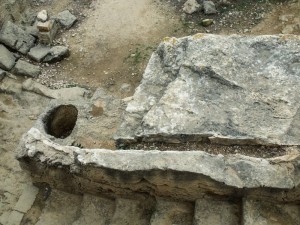
For some kind of liquid run off, Cyprus
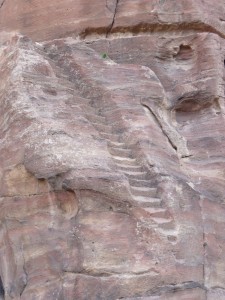
Steps climbing up a steep wall, Petra
.
.
.
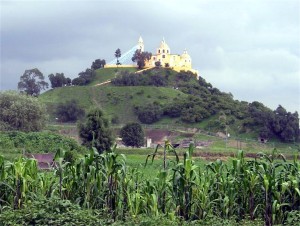
The Pyramid in Cholula, Mexico that looks so much like a hill they built a church on top
.
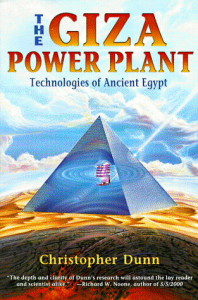 An amazing book that you might have to read a couple of times
An amazing book that you might have to read a couple of times
Pyramids All Over the Planet – Pyramids are mysterious structures which pop up all across the globe, the most famous being those found in Egypt and Mexico but there are others. They are excellent at disguising themselves as hills but in recent years people have started to look and question what is under the soil of some of these suspiciously shaped chunks of earth. We drove to 4 different locations in Italy to film some of these suspicious shaped hills but they are also found in Russia, France, Peru, the U.S, Greece, Slovenia, Turkey, the U.K and the more publicized Bosnia and China.
There is a fascinating work by Christopher Dunn, an engineer who has worked at every level of high-tech manufacturing from machinist, toolmaker, operator of high-power industrial lasers, Project Engineer and Laser Operations Manager. Since 1977 he has investigated the pyramids in Egypt and written some amazing books detailing why he thinks the pyramid at Giza was not built to be a tomb but was in fact a huge power plant.
Another similar set of ancient relics that make the unearthing of pyramids even more difficult are the conical shaped hills/monuments such as Silbury Hill or Nemrut Dagi.
.
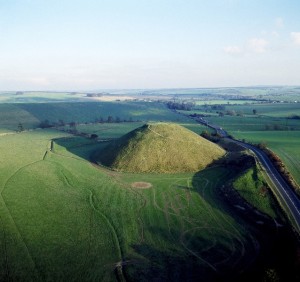
The conical shaped Silbury Hill
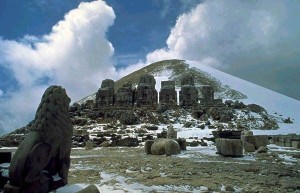
Nemrut Dagi, Turkey, listed as a possible mound
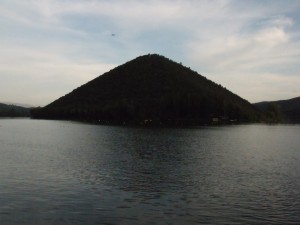
A suspicious hill in Piediluco, Italy
.
One of our films about a possible pyramid in Italy
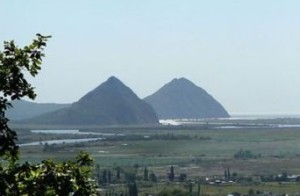
Two hills in Russia
.
.
.
Menhirs All Over the Planet – Standing stones or menhirs are another mysterious type of structure found all across the planet, and one that also adds strength to the claims that there was once a Global civilization in our ancient past. They are mysterious because practically nothing is known about their function, their age or who built them. They come in different sizes, shapes, are made from different types of stone and they are found on their own, next to dolmen or stone circles and sometimes as part of alignments.
The range of sizes is pretty big for example the Grand menhir de brise (Great Broken Menhir) in Brittany (which has now broken into 4 pieces) would have stood at over 20m and is estimated to weigh 340 tons. On the small end of the spectrum they can be tiny little stones 30-40cm high that just look like trail markers.
It is possible that the type of rock used for the stones was chosen due to their mineral content and possible interactions with telluric energies, specifically quartz in the rock which is piezoelectric and a vital component of our computer microchips and watches for this reason.
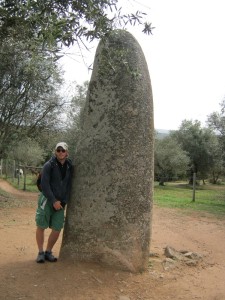
A 4 metre tall stone in Portugal
.
Global Occurrence
.
Menhirs are found in all corners of the world; from Colombia and Argentina to the U.S, Japan, New Zealand, South Africa, India, Somalia, Iran, Turkey and they are spread all over Europe.
.
.
.
Below is a full list of the countries menhirs are found in, click on a country for a link to a website with more details and if you know of a country that is not on our list please let us know.
.
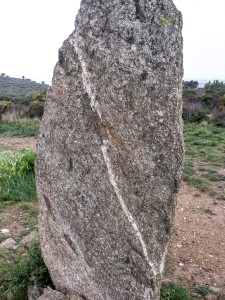
A menhir in Catalunya with a line of quartz
.
Argentina, Armenia, Austria, Belgium, Bulgaria, The Czech Republic, Colombia, Denmark, England, Eritrea, France, Germany, Greece, India, Ireland, Israel, Iran, Italy, Japan, Jordan, Luxembourg, Macedonia, Malaysia, Malta, Morocco, New Zealand, Norway, Portugal, Romania, Scotland, Serbia, Somalia, South Africa, South Korea, Spain, Sweden, Switzerland, Tonga, Tunisia, Turkey, U.S.A, Wales, Yemen
.
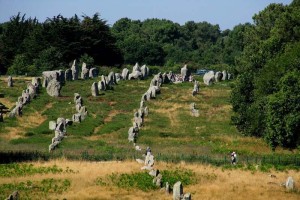
The massive alignments at Carnac
.
.
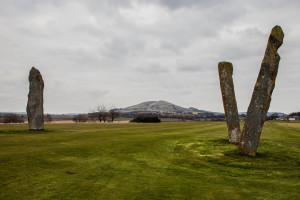
Menhirs on a gold course in Scotland
A selection of standing stones visited by Mick and Rich on our roadtrip around southern france
.
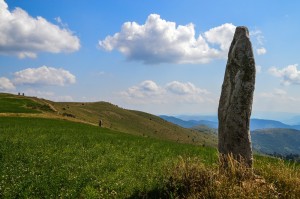
An alignment of stones in France
.
.
.
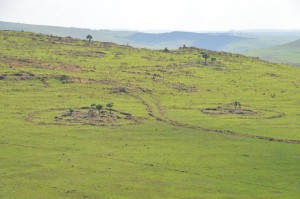
Some of the stone circles we visited in South Africa
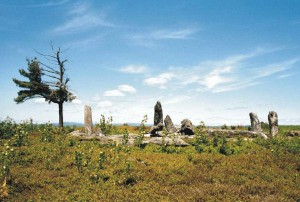
Burnt Hill Stone Circle in the U.S.A
.
Stone Circles All Over the Planet – Stone circles have also been found all over the planet, with a large variation in the size and number of the stones and the shapes of the circle which vary from circular to elliptical. A variety of different features are found; sometimes there is a central stone, sometimes a certain section of the circle has a unique feature such as a recumbent stone or an inner chamber that looks like a room within the circle. Features found close to stone circles include mounds, outlying standing stones, avenues, circular banks or ditches. The largest circle is found at Avebury and is actually a henge due to the presence of a ditch surrounding the circle, it is 420m in diameter and big enough to fit 2 smaller stone circles and a village inside.
.
They are believed to have been built for ceremonies due to the fact that there are no obvious signs of them being used for dwellings, although the type of ceremony is entirely unknown. Others have suggested that they were used to appease spirits and of course it has been shown that lunar and solar activity can be monitored by some circles which act as calendars when features such as a recumbent stones that lead off at certain cardinal points are observed.
.
Global Occurrence
.
The Stone circles in the U.K are the most well known because there are approximately 1,000 of them in Britain and Ireland but this is just the tip of the iceberg when you look at their occurrence around the world, see below for more details.
.
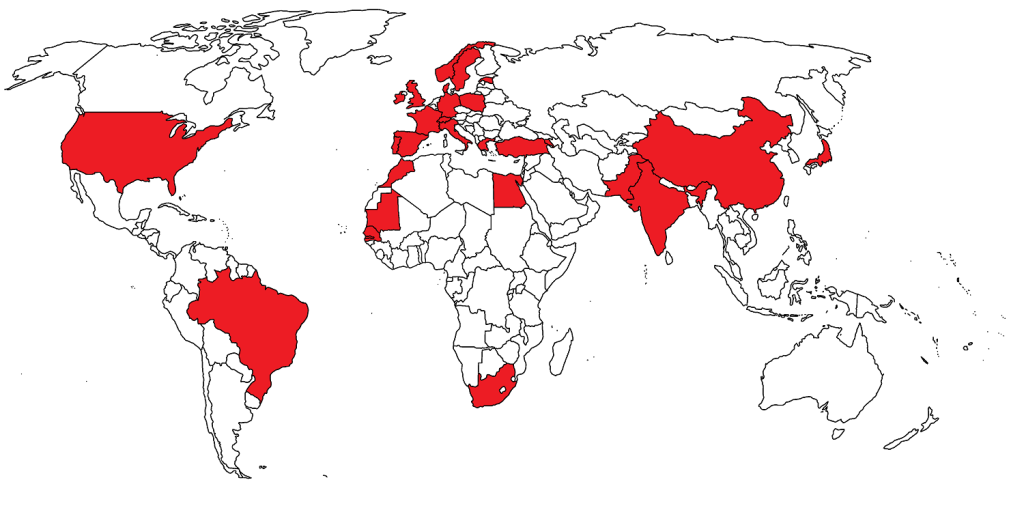
.
Below is a full list of the countries where stone circles are found, click on a country for a link to a website with more details and if you know of a country that is not on our list please let us know.
.
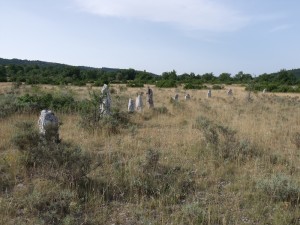
A Stone circle in central France
.
Armenia, Brazil, China, Croatia, Denmark, Egypt, Estonia, France, The Gambia, Germany, Greece, India, Ireland, Israel, Italy, Japan, Mauritania, Malta, Morocco, Namibia, Norway, Pakistan, Poland, Romania, Senegal, South Africa, Spain, Sweden, Switzerland, Turkey, U.S.A, Wales
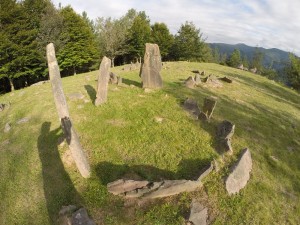
A stone circle in the Pyrenees
.
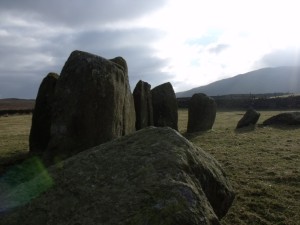
A beautiful circle on the Belinus ley line in the U.K
.
.
.
.
.
Dolmen All Over the Planet – Dolmen are a bit of a mystery really due the variety in size, height, shape, the features they have, the amount that have been found and the range of countries they are found in. Dol-men means stone-table and describes megalithic monuments that consist of two or more upright stones (orthostats) with a capstone lying across the top. There is however a large variety in the type of dolmen found; sometimes they are free-standing, sometimes within a mound, dolmen types include Great dolmen, Passage grave, Polygonal dolmen, Rectangular, enlarged or extended dolmen and Simple dolmen. They can be 30cm high with a 200kg capstone or they can have a capstone that weighs hundreds of tonnes. The largest in the world is Ganghwa in South Korea, measuring 2.6m x 7.1m x 5.5 m and is estimated to have a 300 ton capstone, the largest in Europe is the Brownshill dolmen in Ireland with a 150 ton capstone. Some have corridors, others have little rectangular of circular holes that resemble doors and there can be 2 or 3 orthostats or as many as 20.
It is thought that they were used as tombs or burial chambers although there is very little evidence for this and it’s rare to find bones at the structures. It is also thought that they were covered with earth or smaller stones to form a barrow or mound, which has (in the majority of cases) weathered away leaving only the stone skeleton but we find this hard to believe with many of the dolmen we have seen. While some of these stone structures did indeed have human remains contained within them, it is erroneous to suggest that they were all “tombs” because only at a small percentage of the sites were remains found. Also it has been shown that other dolmen have been used for 1000’s of years but contained no bones whatsoever and some remains that were carbon dated showed the structures were in use hundreds of years after they were constructed. It seems more likely to us that the dolmen were created at different stages in our past (shown by the different levels of erosion of similar dolmen in the same areas) and that later civilizations used some of them as tombs. So the official story that they were used solely as tombs isn’t backed up by much so we should consider alternative ideas, such as:
- They were used by the living for ritual and ceremony, shamans wishing to enter altered states of consciousness and contact ancestors
- They were used to create energy/electricity using wind or music to resonate the stones, which compresses the quartz crystals causing them to emit a charge
- They were built by giants, or were homes for hobbits
- They form part of a global network of megaliths that interact with each other and telluric energies running through the ground
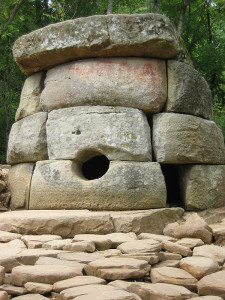
A Russian dolmen with a window
.
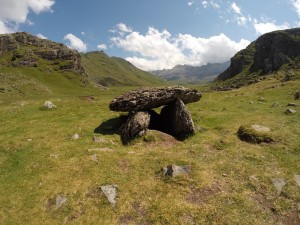
A dolmen in Spain
 A dolmen in india
A dolmen in india
.
Global Occurrence
.
Dolmen are found in all corners of the world; from Colombia and Peru, Canada and the U.S, Japan and Korea, India, Russia, Algeria, Somalia, Jordan, Israel and they are also spread all over Europe.
.
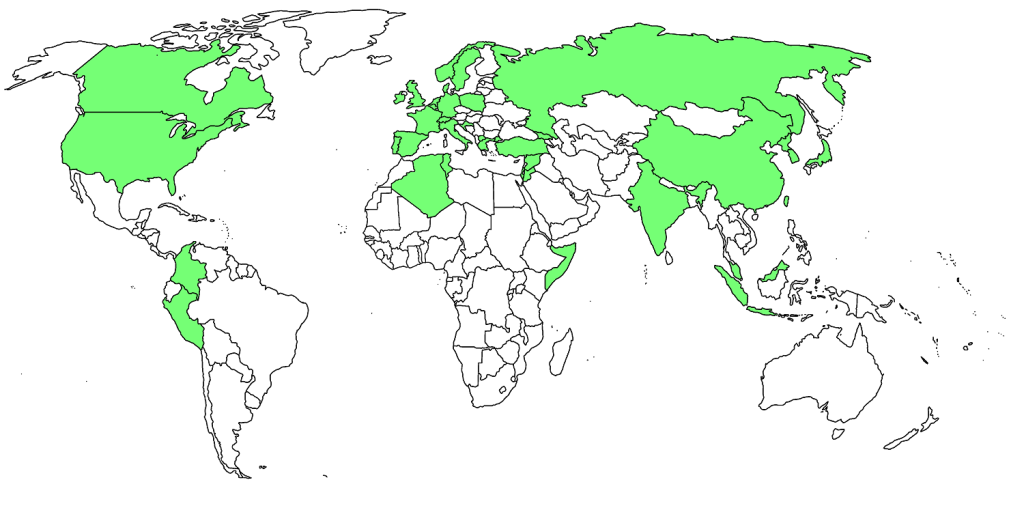
.
Below is a full list of the countries dolmen are found in, click on a country for a link to a website with more details and if you know of a country that is not on our list please let us know.
.
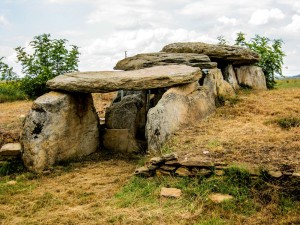
A large dolmen in Turkey
.
Algeria, Belgium, Bhutan, Bulgaria, Canada, China, Colombia, Croatia, Denmark, England, France, Georgia, Germany, Greece, Holland, India, Indonesia, Ireland, Israel, Italy, Japan, Jordan, Luxembourg, Macedonia, Malaysia, Malta, North Korea, Norway, Peru, Poland, Portugal, Russia, Scotland, Somalia, South Korea, Spain, Sweden, Switzerland, Syria, Tunisia, Turkey, U.S.A, Wales
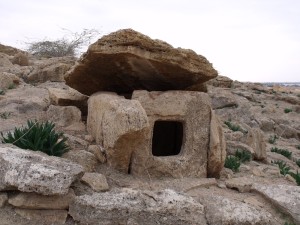
One of a group of dolmen on a hill in Jordan
.
There is a large variety in the form of the dolmen but also some obvious similarities such as those in Russia and India that have circular holes or the Oven doors found in Turkey, France and Jordan.
.
.
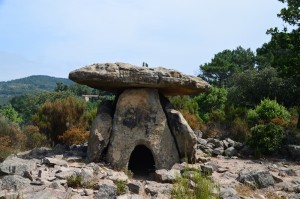
A dolmen with a door in central France
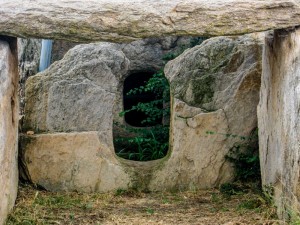
A dolmen door in Northern Turkey
.
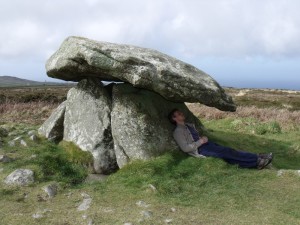
Chun dolmen in the U.K
.
Save the Dolmen – A film about some endangered dolmen fields in Jordan
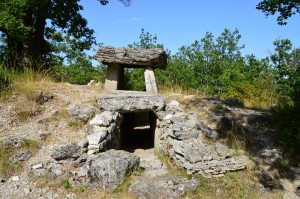
A double decker dolmen in France
.
.
Take a look at our film through the Pyrenees for a look at some really cool megalithic sites
.
.
.
.
Ley Lines and the Becker-Hagens Grid – At the beginning of the 20th century Sir Alfred Watkins noticed how there were various megaliths and churches running along a line through England, now known as the St Michaels Leyline. A century later we are investigating the idea that telluric energies run through the ground along this line, a line that keeps on going and forms a huge grid system that covers the planet – the Becker-Hagens Grid. The distances between ancient sites such as Angkor Wat, Easter Island, Giza, Machu Pichu etc are quite remarkable when you consider that the earth is circular. For example Easter Island to Angkor Wat is 144° (2/5th of a circle), Angkor Wat to Giza is 72° (1/5th of a circle) and so on – for more information Hugh Newman and Graham Hancock have done some fantastic work. This is one of the more alternative theories we like, involving the natural transmission of telluric energies across the surface of the planet and how the megalithic sites were kind of transmitters of this energy. The rocks could be guiding the energy so it can be utilized or manipulated and this seems highly possible when you look at work of dowsers such as David Cowan.
Alternative ideas about telluric energy may be hard to accept if your perception is focused on the 5 sense world but we are missing out on a whole other realm if we do that. Even the air around you is absolutely full of energy and activity (especially if you have wi-fi) even without considering other dimensions, and don’t forget the fact that so called solid particles can also be expressed as waveforms (wave-particle duality, uncertainty principle).
Click for More Info
.
.
Other Megalithic Sites – There are about 50,000 megaliths in Ireland, Great Britain and Brittany alone, with other types of megalithic site that are not as common as the ones we have just described. Long Barrow are rectangular or trapezoidal earth mounds with megaliths embedded in them, various sizes of earth mounds have been discovered all over the world and there are alignments and clusters such as the menhir alignments at Carnac or the dolmen clusters in the Middle East. There are also temples and tombs, both of which are also found across the planet.
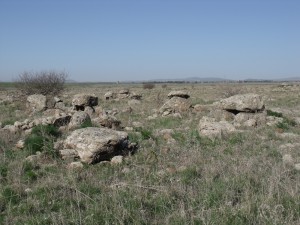
A field full of dolmen in Israel
.
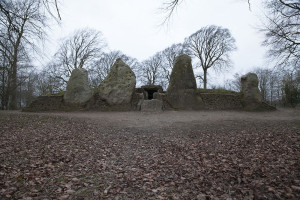
Wayland’s Smithy – the front view of a long barrow
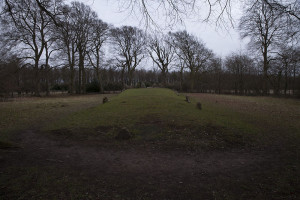
Wayland’s Smithy view from the rear
.
.
.

.
.
.





